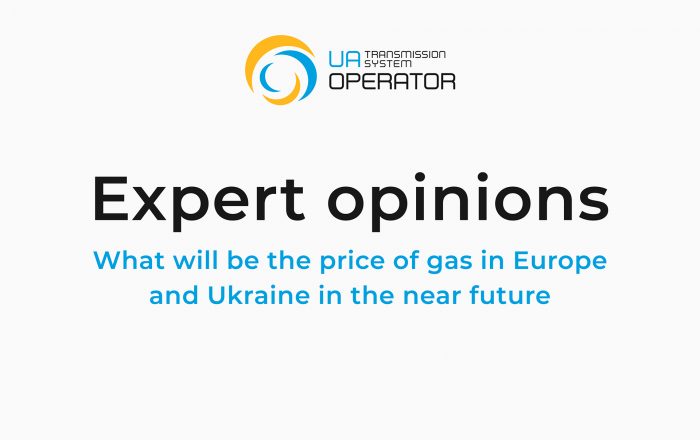Gas TSO of Ukraine presents a new edition of the “Expert Opinions” project. We asked the experts what the gas prices would be in Europe and Ukraine during the next heating season, given that Gazprom’s actions are now provoking a crisis in the gas market.
All the experts agree that the winter season of 2022-2023 may become rather difficult for Ukraine and Eastern and Central Europe. European Commissioner for Energy Kadri Simson said that more than ten countries in the European Union are fully or partially left without russian gas, and Moscow’s behavior in recent weeks has significantly exacerbated the supply risks.
Reducing dependence on russian energy and reforming the gas market cannot be painless – for too long, European politicians have believed in the possibility of collaborating with Gazprom. Such developments as cuts in gas supplies to “drain” the EU gas market, blocking storage facilities filling, and hampering preparation for the heating season have sobered up many Europeans. russia is an aggressor that uses a variety of weapons, from missiles over peaceful Ukrainian cities to natural gas, which they use to blackmail the world. Concerned about prices for the EU consumers, national governments and the European Commission recognizes the need to intervene in standard market operations and protect the most vulnerable categories of consumers. If blackmailers are in the market, the rules need to be changed.
Here are the brief quotes and detailed opinions of Ukrainian and foreign experts on this topic:
Natasha Fielding, Editor at Argus European Natural Gas report

«The European gas market has already priced in at least the fear that Russian gas flows are further reduced or halted entirely, but it is unclear exactly where prices will land if the worst-case scenarios come to pass. »
Mykhailo Honchar, President of the Center for Global Studies
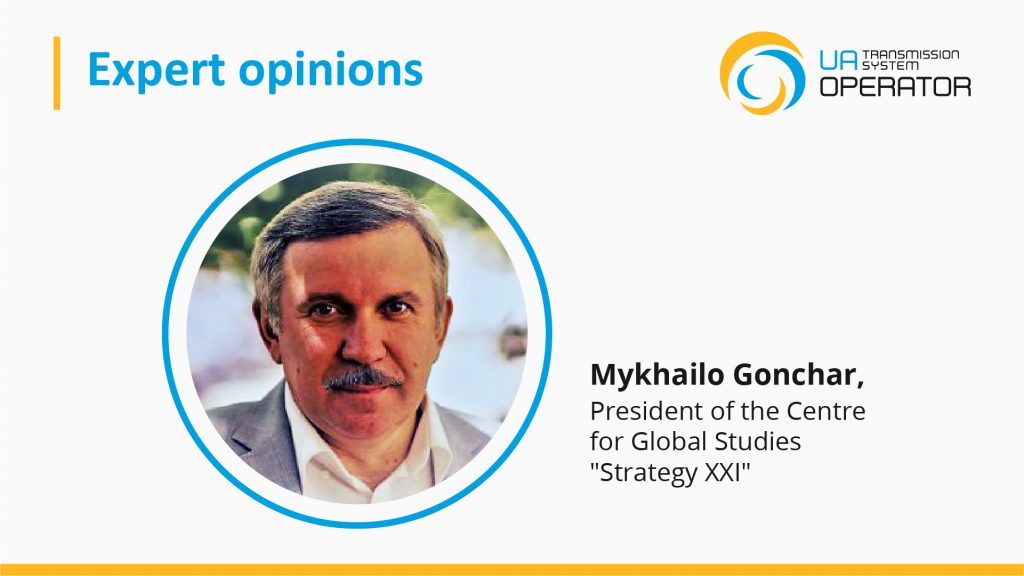
«The loss of significant gas volumes on the market and uncertainty instantly causes the price escalation. The russians’ two-fold goal at the current stage is to prevent the filling of European gas underground storage facilities and impede the EU’s decision-making on imposing a gas embargo similar to the oil embargo. As of June 22, the EU UGS is 54.77% full, and Gazprom’s destabilizing actions hamper achieving of the minimum target of 80 percent by the beginning of winter. »
Aura Sabadus, Senior Journalist, ICIS International Agency for Energy and Petrochemical Industry

«With little say over supplies, governments will not balk at issuing widespread curtailment orders to large industrial consumers. The impact on economies might be dire, but at least governments would be saving limited gas reserves for household heating. »
Artem Petrenko, Executive Director of the Association of Gas Producers of Ukraine
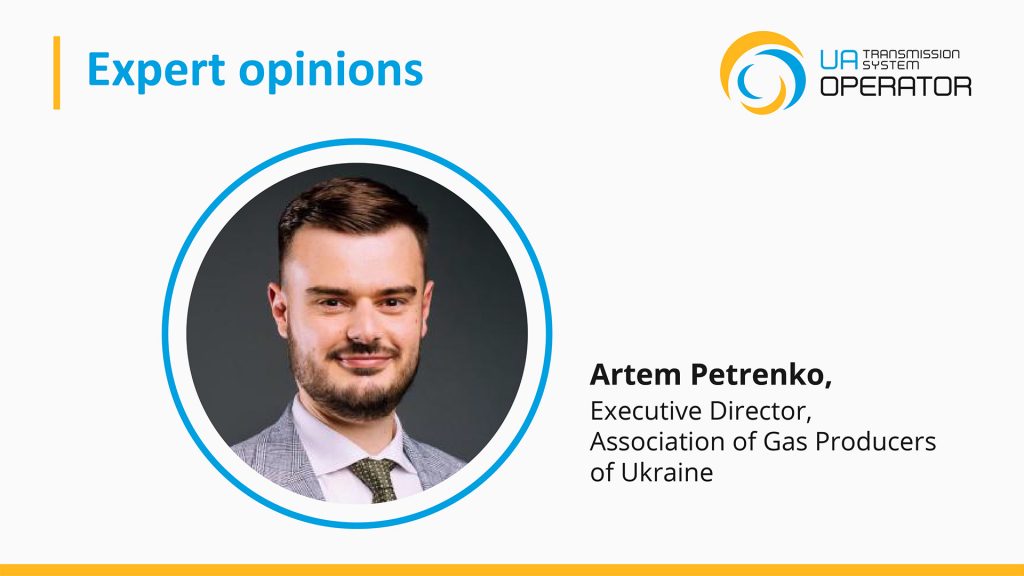
«Since the beginning of russia’s large-scale war against Ukraine, there have been high fluctuations in gas prices, with a 30-40% price range. The peak was reached on the 13th day of the war when the price on the European TTF hub hit $ 2,597 per thousand cubic meters of gas. Until mid-June, the price stabilized, holding at $1,000-1200, but russia continued its gas blackmail by “jacking up the price”. For Ukraine, this winter will be the most difficult since Independence. »
Denys Sakva, Senior Analyst at Dragon Capital

«It is tough to make any predictions now, given the uncertainty about the course of the war, weather conditions, and Gazprom’s policy toward European consumers. However, we should not expect a significant price reduction at European hubs shortly. By the end of the year, the prices may return to about $ 1,000 per thousand cubic meters, but not much lower.»
Andrii Prokofiev, Head of the Division of Cooperation with Clients of the GTSOU
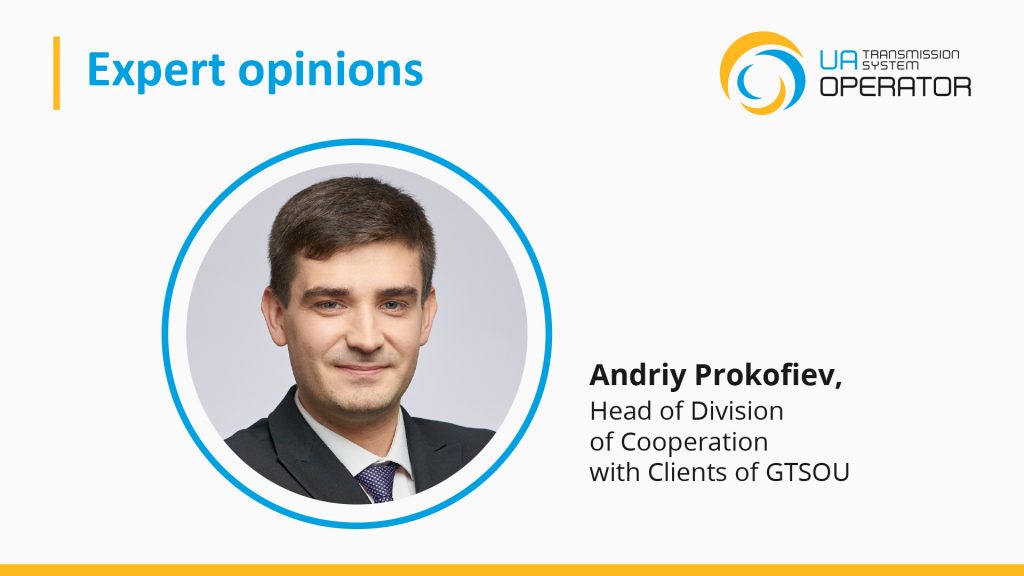
«In the long term, the market may stabilize when the EU eliminates its dependence on russian energy. Market rules do not work if one of the main sellers openly or covertly uses its product as a weapon. Therefore, the key steps should be a full embargo on russian energy and ensuring alternative sources of supply, together with the optimization and efficient use of all available energy sources. »
Serhiy Fursa, Analyst, Dragon Capital
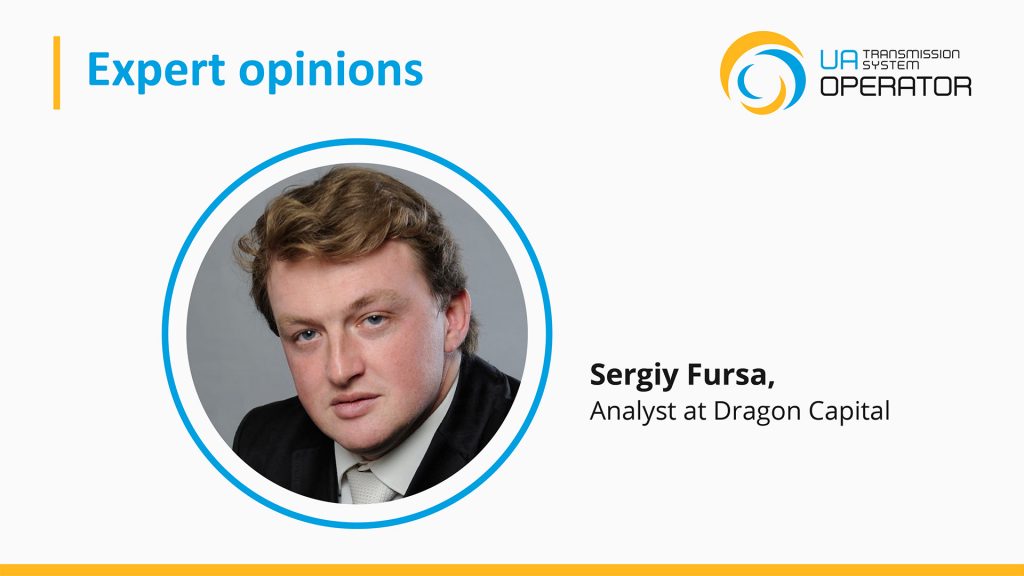
«Tariffs for household consumers in Ukraine will remain unchanged during the war. The Office of the President announced this. Gas and heating prices for the population will remain at UAH 7,420 per thousand cubic meters. The industry will pay a market price for gas of more than $ 1,400 per thousand cubic meters. »
«Natural gas prices in Europe are formed not only under the impact of global factors but also under the influence of russia, which uses gas and pipelines as weapons», – says Mykhailo Honchar, President of the Center for Global Studies. In his opinion, Gazprom’s behavior is dominated not by commercial but by military logic set by the kremlin. Its goal is to provoke an energy crisis in the EU through the escalation of gas prices and interruption of supplies and to force Brussels to lift sanctions against russia, with the parallel launch of Nord Stream 2 to “save” European consumers, refusing to support Ukraine.
Recently, Fatih Birol, Head of the International Energy Agency, openly stated: “The closer we get to winter, the more we understand russia’s intentions.”
«Excessive dependence on supplies from russia has made the European market vulnerable to market abuse and manipulation by Gazprom as the dominant supplier. The “drainage” of the EU market, which Gazprom has been carrying out since last year, has continued this year. In January-February 2022, russian gas imports were the lowest in 2015-2021 and amounted to only 6-7 billion cubic meters per month. The loss of significant volumes of gas on the market and uncertainty instantly cause an escalation of prices. High prices naturally lead to a decrease in the global gas consumption rate. According to IEA expectations, in 2022, the fall in consumption may reach 6%. In Ukraine, russia’s aggression has caused both a decrease in gas production and a drop in overall demand for gas. According to current estimates, the destruction of industry, infrastructure, and housing will reduce the total gas consumption in 2022 by about 28% – to 21 billion cubic meters», said Mykhailo Honchar.
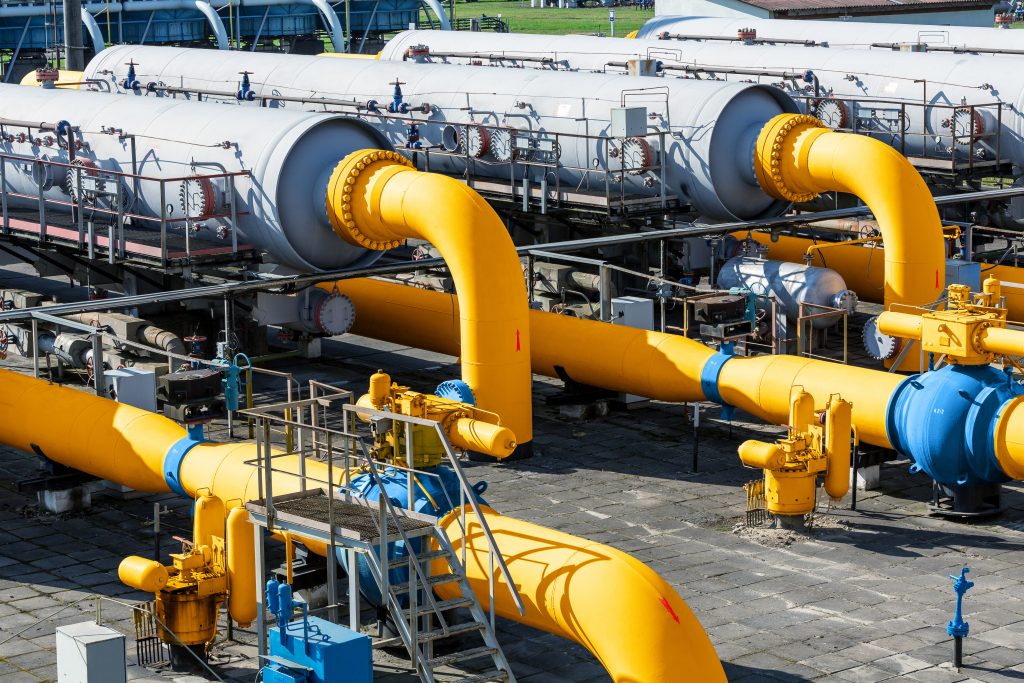
Denys Sakva, a Senior Analyst at Dragon Capital, says that the current volume of Russian gas supplies to Europe has decreased from 300 mcm per day to about 100 mcm, causing a genuinely explosive rise in prices in Europe. The intense heat in Europe and simultaneous reduction in gas supplies led to prices at European hubs, which fluctuated from around $ 900 per 1000 cubic meters in early June, reaching almost $ 1500.
«If Gazprom keeps the supplies via Nord Stream-1 at the current level and does not use sufficient capacity of the Ukrainian GTS, it will reduce supplies by 11 bcm before the heating season. And it will make it difficult to achieve the target storage level», says the expert.
According to Denys Sakva, the price of commercial gas in Ukraine is likely to remain lower than in Europe for most of the year:
«Most likely, import of gas will be carried out mainly by Naftogaz to meet PSO, while other consumers will cover their needs at the expense of commercial producers. The main factor reducing the discount on European prices will be only a further decline in production and growth in demand (at the expense of industry). Another catalyst for the increase in local prices may be the mass purchase of gas from domestic producers by Naftogaz. Then industrial consumers will have to buy imported gas, which, in turn, will lead to price equalization».
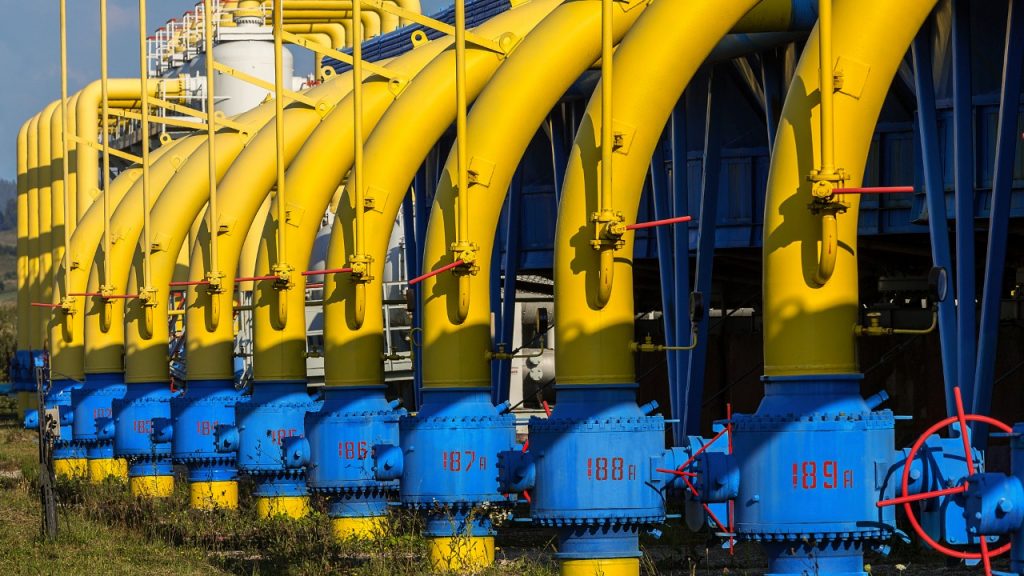
Predicting European gas prices in the upcoming heating season under current conditions of extreme volatility is a hazardous business, but there are several themes that can be discerned, – said Aura Sabadus, the senior journalist at the International Energy And Petrochemical Industry Agency ICIS.
«The first is that the demand-supply balance is likely to remain skewed with markets facing a supply shortfall caused primarily by the ongoing reduction of Russian exports. We know markets face a deficit.
What we do not know is how extensive this deficit is likely to be by the start of the heating season and whether alternative pipeline supplies, LNG imports, and storage volumes will be sufficient to plug winter demand.
Secondly, it is increasingly obvious that countries are prepared to adopt extreme measures for extreme times. Many governments have already equipped themselves with a raft of legal instruments that would allow them to intervene in markets to control demand or price at short notice.
With little say over supplies, governments will not balk at issuing widespread curtailment orders to large industrial consumers. The impact on economies might be dire but at least governments would be saving limited gas reserves for household heating.
Thirdly, geopolitical risk is here to stay.
Geopolitics and, in particular, Russia’s political maneuvering have, at least partially, accounted for the price volatility of recent months and may continue to do so as long as the country is still in a position to influence markets through gas supplies», – said Aura Sabadus.
Artem Petrenko, Executive Director of the Association of Gas Producing Companies of Ukraine, suggests recalling the events in the gas market over the past two years:
“During the COVID-19 pandemic, gas prices have been at record lows. We observed the minimum in May 2020 – the price per thousand cubic meters was $35; at the end of 2021, it increased to $2668. The difference was more than 7500%. The gas demand drop due to the pandemic, production decrease, russia’s speculation, and the refusal to use coal within the Green Deal, which led to an increase in gas demand, partially caused these fluctuations.
In 2022, the successful passage of the heating season caused the price to drop, and everything indicated that it would decrease even more in the summer. However, in February, russia started a large-scale war against Ukraine, and since then, there have been high fluctuations with a range of 30-40%. Thus, the peak value was reached on the 13th day of the war, when the price at the European TTF hub got $2,597 per thousand cubic meters of gas. By mid-June, the price had stabilized and kept at $1,000-1,200, but russia continued its gas blackmail, driving up the price.
Europe shows clear intentions to stop the supply of bloody russian energy resources due to the invasion of Ukraine – the expert notes and adds:
«The EU continues to fill its underground storage facilities actively, diversifies supply and increases the flow of liquefied gas, concludes new contracts and some countries have already completely abandoned russian fuel. However, gas is still putin’s only tool of blackmail and is used to increase prices and artificially disrupt preparations for the heating season. Thus, recently russia has reduced the transit of Nord Stream 1, reduced transportation through Ukraine, and suspended the supply by Turkish Stream. Accordingly, such manipulations are immediately reflected in prices».
Artem Petrenko is convinced that this winter will be the hardest for Ukraine since its Independence. First of all, because of the military invasion of russia, every day shelling led to a decrease in gas consumption by both industry and the population. In addition, Ukraine will have to import part of the gas and buy it at market prices in Europe.
«Given that the war is not over yet, there are risks that russia will resort to aggravating the situation at the front, as well as damaging industry infrastructure, to disrupt the heating season in Ukraine, » the expert said. He adds that until Ukraine is fully self-sufficient in gas from its own production, it will depend on the price situation on the European market. And only increasing the volume of gas production and achieving energy independence can protect the country from various energy fluctuations and shocks.
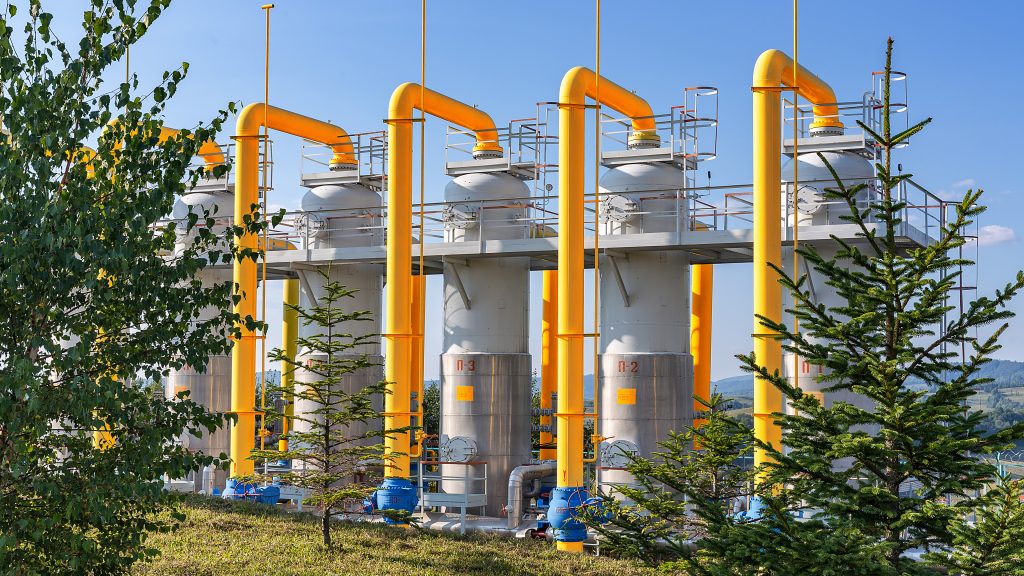
Natasha Fielding, an editor of the Argus European Natural Gas report, says that the European gas market has already priced in at least the fear that Russian gas flows are further reduced or halted entirely, but it is unclear exactly where prices will land if the worst case scenarios come to pass.
«Against this backdrop, normally mundane winter matters like the weather and the inevitable occasional loss of production or infrastructure to outages may move prices further than usual with the market so finely balanced. This was demonstrated recently by the announcement of a short-term — and subsequently an extended — shutdown at the Freeport LNG terminal in the US, which sent European hub prices soaring. And the risks are not only in the Atlantic. Competition from buyers in Asia could reduce the availability of cargoes for Europe and fuel further increases in spot LNG prices as China emerges from Covid-19 lockdowns and summer air-conditioning demand picks up.
Finally, the extent to which Europe can reduce its gas consumption in the power and industrial sectors will be highly influential on prices, and will surely be influenced by them, this winter. In the absence of additional supply, demand may have to fall, either because market forces make prices unaffordable or because governments force some consumers off line», – she said.
The price of gas is now directly affected by the kremlin’s actions, emphasizing Andrii Prokofiev, Head of the Division of Cooperation with Clients of the GTSOU. He recalled that the story of blackmail began last fall: in September-October 2021, Gazprom stopped selling gas on its platform pegged to spot prices for supply in 2022. Then the russian monopoly stopped booking additional capacities for transit through Ukraine and almost stopped transit through Poland.
«Now Gazprom has further reduced transit through Ukraine and is using about 30-40% of the booked capacity while artificially reducing the flow through Nord Stream 1 and repairing the Turkish Stream. All this leads to an increase in gas prices, making it challenging to prepare for winter in the EU countries and increasing the risks of the sustainable passage of the next heating season. What can be done now to minimize the inevitable crisis?:
– use other energy sources (coal, nuclear power plants, etc.),
– intensify measures to save energy consumption – for example, increase the temperature limit in rooms in summer and reduce it in winter.
– accelerate the increase in the level of “interconnectivity” between the GTSs of the EU countries and Ukraine to respond more flexibly to changes in demand and make it possible to transport natural gas along any route. This will allow some countries to help others following the principle of solidarity», – Andrii Prokofiev noted.
As for the upcoming heating season, it will not be easy, and fluctuations in the price of natural gas will continue, – Sergiy Fursa, analyst, Dragon Capital, believes.
«Europe must get rid of dependence on russian gas –and it will do it – specific plans have been announced. A complete reformatting of the market cannot be painless. The Head of the European Commission, Ursula von der Leyen, has already stated that a two-degree temperature decrease in residential heating in Europe will help to replace gas supplies through the Nord Stream 1 pipeline», – the expert recalled.
